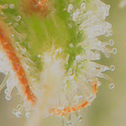Leaderboard
Popular Content
Showing content with the highest reputation on 06/10/2019 in all areas
-
4 points
-
Here is another picture from the BlueBerryKush (Blueberry x Hindu Kush) x KushCookies (Afghani x GirlScoutCookies) - F1 cross. This is the most dominant pheno we have witnessed so far. Smells very much like vanilla, tastes like a sweet Afghani with a bit of aniseed on the exhale. The high is nice and strong almost electric.3 points
-
@Bospatrollie2 here is a list, I am slowly going to work through it, lol, if you trace the strains you should get some good ideas of which landraces u could use. A lot of the CBD strains do have a bit of secrecy about the origins, big bucks now the weed biz. I would think the oldschool "majdad" from lesotho or old TK - Tarri, could have more CBD, but truly its just a guess, until we grow some out and test it. Sativa Dominant High CBD Strains CBD Mango Haze Charlotte’s Web Dance World Harlequin Hawaiian Dream Island Sweet Skunk Jamaican Lion Johnny’s Tonic MediHaze Rafael Swiss Gold Hybrid High CBD Strains ACDC Avi Avi-Dekel Blueberry Essence Canna-Tsu Cannatonic Dieseltonic GI001 Harle-Tsu Maui Bubble Gift Midnight Nebula II CBD OG Ringo One to One Purple Cheese Ringo’s Gift Sour Tsunami Trident Valentine X VCDC Warlock Zen Indica Dominant High CBD Strains Afghani CBD CBD Shark Dark Star Devil Fruit Digweed Haoma Pennywise Remedy Stephen Hawking Kush Sweet and Sour Widow Violator Kush CBD Critical Mass2 points
-
Day 12 Chose the 4 strongest and planted to pot. Added a humidifier to get RH to 65. Temps range 16.5 - 25. All autos. They seem to be happy. Pineapple Express Blue cheese 1 Blue cheese 2 Mazar2 points
-
Okay ouens hustle up close so you can see clearly. Today I took clones for: DC OG Amnesia Haze Strawberry Amnesia Bay11 Blue Dream I'll be taking clones for the AK and Lemon Diesel in a few days. Flowering for these bottom girls will start around the end of this month Pielle over and out Sent from my G3312 using Tapatalk2 points
-
Lekker ouens lekker!!! Sent from my G3312 using Tapatalk2 points
-
Here is another few nuggies, outdoor grown. BlueBerry Kush (Blueberry x Hindu Kush) x KushCookies (Afghani x GirlScoutCookies) - F1 This is the Orange/Apricot (Citrus) pheno. AKA - Appelkoos konfyt . Will start a inbred line from this specific plant, on the tongue orangy sherbert taste.2 points
-
Breeding Cannabis at home as a hobby (or more seriously) is now easier than ever before, thanks to the pioneers that have been tirelessly breeding (and preserving) countless of generations since the early 80's in Holland, US and other parts of the world. We as hobbyists can now start with proven genetics and try to develop new, or preserve certain traits/effects that the Cannabis flowers posses. Feel free to ask questions or share your experiences/resources. Cannabis Breeding Articles https://www.cannabisbusinesstimes.com/article/cannabis-breeding-basics/ https://www.leafly.com/news/cannabis-101/what-is-cannabis-breeding https://www.royalqueenseeds.com/blog-breeding-and-preserving-cannabis-genetics-at-home-n511 https://www.alchimiaweb.com/blogen/marijuana-growing-guide/history-of-marijuana-strains/ to be continued..1 point
-
The Plug Seeds - Spumoni This one I got as a freebie from Amsterdam Seed Centre. It is a cross between Dosi-do and Sunset Sherbet. I know how the fuck did they come up with this name? It is planted in a home made mix of organic soil. Will be growing her indoors under a combination of LED's and Metal Halides. Sent from my VTR-L09 using Tapatalk1 point
-
Something to look forward too.. Dagga Private Clubs, would like to look into and invest into a Club within the North West. For Cannabis Oils, Cannabinoid Research and growing of African Generic Seeds. I have been interested in doing something to this effect but did not have the knowledge to start and process this, It is pretty much how this forum works but would like to create a public entity that we can manage and when all becomes legal and legitimate, we have the networking and resources in place. What do you guys think?1 point
-
The breeding has allready started... will see what the 2nd gen. delivers. How deep does the rabbithole go??? Sent from my SM-A500F using Tapatalk1 point
-
I forgot to mention that Rudaralis is usually high in CBD lower in THC. Its easy enough to buy some breeding stock to get started with a CBD line, breeding from a landrace is a massive commitment (and loads of $$ testing), hopefully one day.1 point
-
That is a decent list dude... thanks. Yeah...you gonna have to grow it and test it yourself- because of proprietary info most of the breeders won't share that info easily. It's a lot of commitment, physical and economical if you're doing it by yourself. I'm running mostly sativa strains due to the heat and high RH in summer. Dont know if Indica dominant strains will handle our summers - 30deg nights, 42deg days 80 to 90%RH. The idea is a perpetual outdoor grow Sativa during summer, Indica for winter. Matching my strains to the weather. Sent from my SM-A500F using Tapatalk1 point
-
I saw this at Brights the other day, did not buy it but could work nicely in conjunction with a low power heater: https://www.brights.co.za/plug-in-electronic-thermostat-1/ Like I said, never used it... I bought a heater and digital timer and running the heater for 30 min every 2 hours from 7PM to 9AM. My grow area is very cold...1 point
-
Finding pure land race strains would most likely entail travelling to the country of origin and personally collecting the seeds to ensure tracibility. Are there sativa strains with notible CBD content? I'd be interested. Sent from my SM-A500F using Tapatalk1 point
-
@PsyCLown Yea I take clones from my clones. Two months rooting and vegging and two months flower.1 point
-
Got some imported Swazi Gold bagseed. Probably some F1/P1. Don't know if that would be of interest?1 point
-
What do you think about this? https://www.takealot.com/milex-nanotec-wall-plug-heater-white/PLID49530770 Seems like it turns off if the temp is right.1 point
-
Hey AcidAlice, I'm also running 3 autos currently in my grow space. What I found was that you seriously cripple the growth of your seedlings with temps in the mid teens and with autos this is a very important part of their life cycle. My temp swing was a bit heavy with evening temps touching 11 degrees, my autos currently just shy of 4 weeks look like my previous autos from 3 weeks... only time will tell if it is going to make a big difference in the end though. Good luck with the grow!1 point
-
1 point
-
1 point
-
Sorry for the late update! It’s been about 3.5 weeks since I’ve dropped the seeds in some water and I think they’re doing well. The ASD is growing quite a bit slower than the TBK, even taking the day later germination into account. TBK (right) was transplanted 5 days ago, ASD (left) two days ago. Still no nutes as they don’t seem to need it yet but let me know if I’m missing something.1 point
-
1 point
-
1 point
-
1 point
-
Congrads @Green Leaf Organics Looking forward to your Green organic Input!!1 point
-
Congrats @Green Leaf Organics I am sure you'll do a great job of keeping everyone and this forum in check and assisting with the various comps and such!1 point
-
@Dank no strains in particular, maybe some south african landrace based strains?1 point
-
With the grow off going It might be a good idea to keep the comp going?1 point
-
Sup 420SA Disclaimer: I breed Cannabis seed as a hobby to help preserve seeds (genetics) and possibly improve certain strains. I provide these genetics for free to our Collective of growers, most of which are medical patients. I am not a master breeder, this was the first year that I could see so many of my own crosses being grown out, a wonderful experience. After being a custodian for so many years, it is time we share the Fire with the community. Some of the bud shots will be grown by me, most pictures I will post here will be from growers and future breeders in our Collective. Blessed love1 point
-
1 point
-
1 point
-
beautiful girl, grown under a combination of QB leds from Growopz and a blurple 300w from eBay. Lost a lot of her greenness in the curing process but packs a punch no doubt and smells truely sour1 point
-
Awe, shot @420SA and Freedoms Farms. Looking forward to trying that fire juice. Pretty bummed that POTM is halted. I would've had a lekker entry for this month1 point
-
1 point
-
1 point
-
This is a good read, thought I would also share it here, a very long version (tips from various sources) is in the Breeders Group if you find this interesting. Happy growing 420SA! Breeding tips:How to bring out the Sativa and breed the ultimate buds.To understand the principles behind the breeding of cannabis you first need to be familiar with some basic terms related to genetics. "Genotype" is the genetic and chromosomal make-up of any given individual — it is the genetic code. "Phenotype" is the expression of body type, structure, and appearance of individuals; it results from the interaction between genotype and environment.Specific environmental conditions are often required for certain phenotypic expressions from a given genotype. If the available nutrients, hours of sunlight, or other conditions are not available then the development of the plant or animal will be altered. These conditions are referred to as "environmental triggers."Two individuals with the same genotype can have greatly different phenotypes if grown in different environments.Indoor vs outdoorIn terms of growing and breeding cannabis, there is a distinct difference between indoor and outdoor grow environments. No matter where on the planet one is, the indoor environment is usually far more limited when compared to the spectrum of conditions existing outdoors.When compared to the wide variety of conditions available outdoors, the indoor environment may be seen as relatively bland and generic. The greenhouse environment, especially when fortified with electric light, is perhaps the closest thing available to a happy marriageThree subspeciesIt is useful to agree, at least in theory, that there are three separate subspecies of the genus Cannabis — Sativa, Indica and Ruderalis.Cannabis Sativa is the equatorial variety found primarily around 30 degrees latitude North or South. Sativa generally grow tall, from seven to thirty feet, have many long branches, narrower leaflets, and mature slowly.Cannabis Indica varieties generally inhabit the areas between 30-50 degrees North or South latitude. Indica are generally much shorter than Sativa, only about three to five feet tall. They have fewer and shorter branches than Sativa, the longer of which are lower on the plant, with much wider leaflets. They also mature earlier and more rapidly than Sativa.Cannabis Ruderalis grow naturally primarily past 50 degrees north latitude (the Siberian steppes). Ruderalis are the shortest, least bushy, and fastest maturing of the three.The end of the sweet spotsPrior to the late 1970's, virtually all commercially available cannabis products came from the great outdoors. Many of these varieties had been grown in their particular region since antiquity — not since the advent of sailing had a greater diversification and distribution of the herb occurred.Most cannabis available was also very well acclimated to its particular region of origin. Certain places tended to produce very unique and desirable types of herb that were renowned to each region. I like to refer to these high-quality cannabis producing areas as "sweet spots." The products coming out of these sweet spots during this era were among the finest herbs ever available.A series of phenomena occurred in the late 1970's and early 80's that has since revolutionized the cannabis industry. This series included the triad of sinsemilla, High Intensity Discharge (HID) lighting, and the introduction of Indica genetics, coupled with draconian herb laws that drove the industry far underground. Never before in human history was so much genetic diversity of cannabis grown in such generic, indoor conditions. The results of this phenomenon have wreaked havoc on the cannabis gene pool.The road to blandnessAs Indica, sinsemilla and HID lighting became predominant, it became apparent that Sativa varieties were very difficult to coax commercial amounts of sinsemilla herb from indoors. The fast maturing, dense bud structure of the easy-to-grow Indica soon dominated the indoor grow scene.Another factor contributing to the desirability of the indoor Indica was its truebreeding "dioecious" nature, meaning that individual plants tend to be male or female only, but not both. In contrast, many Sativa strains show hermaphroditic tendencies indoors, with male and female flowers on the same plant. (It is my opinion that wild Sativa strains of cannabis are primarily truebreeding hermaphroditic varieties.)As outdoor production diminished due to intolerant laws and the drug war, indoor production of Indica phenotypes became the staple of the commercial indoor grower. The road to generic blandness had begun.Although some Sativa/Indica crosses matched some of the Sativa flavor and head high with the Indica bud structure, this desirability would only last for a few generations of breeding. Unless a person is breeding for a very specific trait, crosses seven generations and beyond the original P1 Indica/Sativa cross lose much of their original charm and desirability. Cloning, however, helps to extend a given plant's potential.Ruderalis: myth and misnomerAs indoor growers attempted to improve their genetic lines via breeding, another interesting phenomenon occurred: Ruderalis. Although there is a wild variety identified as Ruderalis in Russia ("Ruderalis" is supposedly Russian for "by the side of the road") that grows very short and matures very fast, I seriously doubt the rumor that someone actually went to Russia to collect seeds of this variety sometime in the past. Or, if someone actually did go all the way to Russia to find, collect and smuggle "rudy" seeds, I do feel sorry for their waste of time. They could have gotten the same worthless thing from Minnesota, Saskatchewan or Manitoba with much less hassle.The North American Ruderalis probably originated as follows: After the Indica varieties arrived in the US and became incorporated into the gene pool, many breeders began to cross the earliest maturing individuals with each other in hopes of shortening the maturation cycle.It would only take a few generations for the ugly Rudy phenotypes to begin expressing themselves. By ugly, I am referring to a strong lack of potency and/or desirability. I know, I was once guilty of the practice myself. It did not take me long to realize that this was a huge mistake in regard to the quality and potency of the future generations' finished product, and all subsequent breeding along this line was ceased.Many of these manipulated rudies were released on the open market between 1981 and 1986. It was shortly after this period that the grow journals of the era (Sinsemilla Tips and High Times) ran articles about the possibility of a new wonder variety for indoor grows: fast blooming Ruderalis. Rumor had spread to myth and misnomer. Therefore, it may be more appropriate to say that the Ruderalis phenotype was coaxed from Indica genetics, via the indoor breeding environment.The same applies to many of the Indica dominant varieties available today. Breeders selecting for early, fast flowering or fast growth often miss out on some of the finer and more subtle characteristics available from crossing certain genotypes. My advice to breeders is to wait until the finished product is suitably tested before coming to any conclusions regarding desirable candidates for future breeding consideration.Phenotypic expressionThe malleability of phenotypic expression among the Sativa/Indica crosses must also be noted. The variability of phenotypic expression among the f2 generation of a truly polar (pure Sativa/pure Indica) P1 cross is quite phenomenal. The second generation f2 crosses will exhibit the full spectrum of possibilities between the original parents — extreme Indica, extreme Sativa, and everything in between.However, regardless of any particular phenotype selected from among this given f2 cross, future generations may drift radically. Depending on the presence (or lack) of a number of environmental triggers, an f2 Indica phenotype may be coaxed more toward Sativa traits, or an f2 Sativa phenotype may be coaxed more toward Indica expression. The key is environmental conditions.This is what distinguishes the truebreeding, ancient acclimated, region of origin varieties — especially the tropical and equatorial Sativa — from the crosses that have happened since. The ancient specimens have a much narrower genotype range, and therefore a more specific phenotype than their contemporary crosses despite environmental conditions. It is up to future adventurers to provide the best possible environmental considerations, along with the best possible genetic considerations, in order to resurrect the legendary happy flowers of yore.Inducing SativaAfter many years of first-hand experience breeding herb indoors as well as outdoors, I am of the opinion that the two most influential factors involving phenotypic variation and expression among current indoor herb breeding projects are the photoperiod (hours of light per day) and the angle of light in relationship to the growing plant.Specifically, I find the single most powerful influence to the Indica dominant phenotype is the traditional 18/6 veggie cycle and 12/12 flowering cycle. The 18/6 veggie and 12/12 flower cycle is an attempt, however poor, to mimic the Indica-producing photoperiod. It is my belief that this light cycle strongly influences for Indica phenotypic expression.Sativa phenotype characteristics will manifest under a more equatorial photoperiod, closer to a 13/11 veggie cycle and an 11/13 flower cycle. This is the light timing range to use to elicit more Sativa dominant expression from your plants.As for the exact photoperiod formula that I incorporate into my growing/breeding regime, this will presently remain a trade secret. My advice is to experiment with different photoperiods, keep good notes and pay attention. Avoid the 18/6 and 12/12 photoperiods, while tweaking the times a bit differently with each breeding cycle until more desirable results in the finished product and their offspring are noted. Here's a hint: work in half-hour increments or a little less, and good luck!Angle of LightAngle of light simply refers to the physical angle of light source the plant is dependent upon for growth. Perhaps the greatest difference between indoor and outdoor environments has to do with the angle of light received by the plant. This is also one of the greatest seasonal differences between the Sativa and Indica producing regions.Outdoors, the main light source is the Sun, with minor influence coming from nearby reflective surfaces. As a plant grows taller and broader outdoors, that angle of light from the sun changes very little in relationship to the growing plant.Seasonal changes in angle of light increase the further away from the equator one gets. At the equator there is the least amount of seasonal change in angle of light, only about 20°, whereas at the 45th parallel that change is as great as 45°. At the 45th latitude, the Summer Sun is high in the sky while during early Spring and late Fall the sunlight comes from much lower in the sky. The farther one goes from the equator, the greater the difference in seasonal changes regarding angle of light.Indoors, the lights typically range from a few inches to several feet from the plant. As the plant grows taller, its physical relationship to the bulb's angle of light changes considerably. Most indoor grow rooms have relatively low ceilings, therefore, raising the bulbs may maintain a similar angle of light early on, but eventually the angle changes. The same differences may be noted among plants directly below the bulb and the plants off to the side of the room farther away from the bulb.Circular light shuttles tend to emulate the arctic summer and create a confusing signal completely unknown to the equatorial Sativa. Straight-track overhead light shuttles are more conducive to inducing the Sativa phenotype.Aromatics and flavorsMany indoor growers try to get their budding plants as close to the light source as possible. Though this may increase bulk production of both bud and trichome, I find that this practice tends to destroy many of the finer aromatic qualities of the herb.Buds too close to the light tend to express nothing beyond the lower lemon/lime aromas of the fruity spectrum. Sometimes the aroma is no better than a strong chemical/astringent odor and flavor, especially those under High Pressure Sodium light systems. The finer berry flavors tend to favor more distance from the bulb, and will manifest more strongly under High Ultraviolet Metal Halide light systems, especially during the latter stages of flowering.Something akin to a gymnasium building with high ceilings and super 5000W lights hung far from the growing plants, set at a Sativa-tweaked photoperiod, would be the ultimate indoor grow-op to coax Sativa phenotypes.Sweet spot fantasyNothing will ever rival the great outdoor sweet spots for quality cannabis production. Hopefully, someday, somewhere, someone will be daring and lucky enough to get away with re-establishing some of the great genetic lines in their specific region of origin sweet spots.Equatorial Sativa varieties are of interest for quality herb production (Thailand, Oaxaca, Colombia, Central Africa, etc.) as the Indica zones are more renowned for hashish production. Parts of Nepal tend to produce both excellent hashish and fine Sativa buds, with some plants reportedly living longer than two years!I hope that I am able to live long enough to once again experience the joy associated with the fine herbal products from the great regional sweet spots of near ancient lore. It has been a long time and I am looking forward to the day.by DJ Short1 point
-
These are the chemicals, and none of my Girl Scout Cookies has ever thrown hermies for me (and I've had light leaks before).1 point
-
You can create mother plants from clones, however some growers prefer to keep their mother plant that was grown from seed. Pollen that comes from a male flower on a female plant will have no male chromosomes and will produce female offspring. The next generations will become hermaphrodite a lot easier if plants get stressed, etc.1 point
-
That is what I have managed to gather so far. If you use the hermie pollen on a female the chances of the seeds going hermie is reduced. It is also advised to discard the plant that the colloidal silver has been used on and not smoke or make oil/edibles from it. So getting seeds from that plant is probably not the best either.1 point
-
With the bit of research I've done so far, a hermie will produce femenized seeds by itself, but you stand a good chance of carrying over the hermie in the seed. Therefore seeds produced this way is more likely to hermie by itself instead of needing the colloidal silver to force the male flowers to grow. Don't see any reason for this not to work on a autos as well.1 point
-
@CleanGreen I think the whole idea behind a mother plant is more to know exactly what you are going to get instead of having to grow from seed with a chance of getting same strain but different fenotype. Mothers can also produces clones all the time, so getting a hight number of plants going quickly, a mother would be useful. It seems that the colloidal silver does work. It is just not recommended to smoke the plant that you used that method on. So best is to treat one of the clones with colloidal silver and then pollinate a different female. That produces female seeds only as the pollen used originally came from a female plant.1 point
-
Thanks @RedEye, I'll use that as a starting point for mine. FWIW I've converted it to excel and attached: 2019-05-30_17-21.xlsx You can customise by changing the 150L value. I'll fiddle more and upload again if I think it may be useful1 point
-
Went to visit my friends yesterday, brothers of the collective, vibe was good as well as a nice surprise, there was still a Kush plant growing in a shady spot that I never noticed before. Last tree standing, the plant managed to find its way up to the sunlight and is busy doing its thing, quite late in the season, the guys are battling some PM, but I am sure it will be under control by next week. Keeping an eye out for bud rot, but so far so good. Smells like some Vanilla Kush. When I asked the guys if they would like to pose for some bud shots, they said that they don't have any of the higher grade out, only the "majad"! Which now refers to the early harvested and popcorn buds. As we set up the tray with some of the buds, the Iya replies, "This is the morning stash mon!", just like in Strain Hunters Jamaica, classic!1 point
-
Side note: I will try describe strains as accurate as possible, bear in mind the original genes arrived at my door more than 8 years ago. I won't go WaltDisney yet and start calling every phenotype out of a cross something like "manderin zkittlez". Will leave that for the boys and girls that find those ELITE moms. I am always up for discussing genes of my crosses in more detail. This baby really surprised me, grown outdoors tastes like some damn potent indoor Chemdawg mixed up with fruits and sherbert. Posting this babygirl first. Grown by me outdoors, organically, harvested a tad early, perhaps a week or so, but super happy with her. Took the pic in the morning sun. BlueBerry Kush (Blueberry x Hindu Kush) x KushCookies (Afghani x GirlScoutCookies) - F1 OG tasting pheno. Edit: I realize my camera is not the best quality, will look to Wish perhaps for some HD cam so I can give better detail. Hope it gives a general idea. Ok the day calls! Take it easy SA, Big Up Yourself and your Crew them!1 point
-
last 3 poll options for me, they're busy pissing in the pond before we all get to swim in it1 point
This leaderboard is set to Johannesburg/GMT+02:00


















